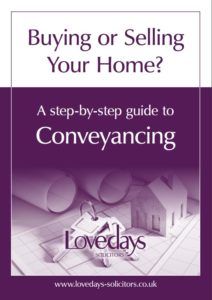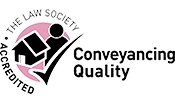- You & Your Family
- Your Job
- Family Law
- Divorce and Separation
- Finances on Divorce
- Dissolution of Civil Partnership
- Separation
- Cohabitation Agreements
- Finances on Breakdown of Cohabitation Relationship
- Prenuptial Agreements
- Grandparents' Rights
- Step-Parents' Rights
- Child Maintenance
- Parental Responsibility
- Paternity Disputes
- Buying Property Jointly
- Probate
- Wills
- Your Property
- Conveyancing
- Partnerships
- Disputes
- Boundary Disputes
- Dealing with Rent Arrears
- Japanese Knotweed Claims
- Landlord and Tenant Disputes
- Landlord Harassment & Illegal Eviction
- Negligence Claims Against Builders & Developers
- New Build Property Disputes
- Noisy Neighbour Disputes
- Personal Debt Collection
- Property Misrepresentations Claims
- Rights of Way Disputes
- Section 21 No Fault Evictions
- TOLOTA Claims
- Tree & Hedge Neighbour Disputes
- Your Business
- About Us
IHT400 Application Advice
If you are administering the estate of someone who has passed away, then there may be inheritance tax that needs to be paid. If this is the case, then you will need to complete the form IHT 400 as part of that probate and submit it to the probate registry and HMRC. This can be a difficult and time-consuming task as it will require you to calculate the exact value of the estate that you are dealing with and how much Inheritance Tax is due.
That is why the expert team at Lovedays Solicitors are on hand to assist you with the entire process. This can avoid any errors or omissions, which could lead to lengthy delays or financial penalties for the estate. We can make the process less stressful and can ensure that everything that is represented within the form is entirely accurate so that there is less room for error.
Overview of IHT400
The IHT 400 form is required if the deceased died on or after the 18th of March 1986 and there is inheritance tax to pay. This is also relevant if there is no inheritance tax to pay, but the estate does not qualify as an excepted estate. This form must be submitted within 12 months of the date of death and interest will be payable after six months.
If you are applying for a Grant of Probate, then you will need to have paid any inheritance tax that is due before this can be issued. It is therefore important that you make sure the IHT400 form is fully completed and submitted as soon as possible in order to then be able to deal with any issues within the Will of the deceased. You will need to calculate the gross value of the estate by determining the value of any assets and deducting any debts or liabilities, in order to determine whether Inheritance Tax is due or not. If the gross value of the estate is over £325,000 and no assets are being transferred to a surviving spouse or civil partner, then you will need to use form IHT400.
{quote}
Key Components of IHT400
The IHT400 form is split into a number of different sections which will need to be completed thoroughly and accurately. The first section will look at the details of the deceased person including their full name, last address, date of birth and their date of death. It will also ask for their National Insurance number.
The next section will concentrate on the valuation of the estate. You will be required to give a summary of the total value of the deceased's estate, including the value of any property, shares or financial assets. You must make sure that this information matches the financial documents that you have as evidence. The next section concentrates on the executor’s information. This requires the details of the person responsible for carrying out the wishes of the Will. It will need their names, addresses and any relevant contact details.
Section 4 of the IHT400 concentrates on the issue of gifts and transfers. You will need to detail all gifts that were given by the deceased in the seven years prior to their death, Including the full monetary value of the gift. In the next section, you should list all debts and liabilities that the deceased was responsible for at the time of their death. This might include any mortgages, loans, credit card debts, or other financial obligations that were outstanding. Once these have been calculated, they should be deducted from the total value of the estate.
It is also necessary to indicate any assets that were jointly owned by the deceased and any other person. You will also need to specify the type of joint ownership, indicating whether they were tenants in common or joint tenants, for example. You must also list any assets that the deceased held outside of the United Kingdom. There will need to be details on the type of asset as well as its value and the country in which it can be located.
You should make sure that you use a currency exchange rate that is applicable at the time of death in order to value this. There are also sections which concentrate on any trusts, settlements, life insurance policies and pensions that the deceased might have held. You will also need to state whether they had an interest in a business or were part of a partnership, and whether they owned any agricultural property or assets.
Those awesome exemptions and reliefs to inheritance tax and if these apply you should list them on the form. Once all of this has been calculated, you will be able to work out what Inheritance Tax is due. There are instructions on the form to help you determine what the correct amount will be. It is then necessary to include payment details to allow the inheritance tax to be taken. This could be a direct debit, bank transfer or other method.
Steps to Complete IHT400
Gathering Required Information
Before you can begin filling in the IHT400 form, you will need to gather together a lot of paperwork to assist you in providing the correct information. This might include asset valuations as well as details of any debts or liabilities. It is important that these are completely accurate and honest as they will be used as part of the evidence for any inheritance tax calculations. It can therefore be necessary to involve outside professional agents to help you determine the exact value of any significant assets such as property.
Once you have completed and submitted the form, you should keep copies of all of this documentation in case it is needed at a later date for any inquiries or complications.
Filling Out the Form
Filling out the IHT400 form can be complicated, so it is important that you take each step carefully. Ensure that you have gathered together all the information you need before you begin so that you can have it by your side as you complete the form. It is important that you do not make any estimations when filling in the form and stick to accurate, detailed figures which you can back up with your paperwork.
You should also set aside enough time to go back over the application and double check everything that you have done to make sure it is complete. It can be advisable to make use of a solicitor like those at Lovedays Solicitors who have experience in dealing with Inheritance Tax to help you fill out the form, as this can help to avoid any mistakes and delays.
Submitting the Form
Once you have completed the form, you will need to send it to HMRC in order to be processed. This should be sent to HM Revenue and Customs, BX9 1HD and it is important to send it via recorded delivery in order to ensure that you have proof of postage. You may need to include some supplementary pages with the form known as I HT400 schedules.
As these can help you to provide additional details about specific assets, gifts or reliefs. You may also need to send supporting documents such as valuations or certificates, but make sure that these are copies. Form IHT401 will need to be included if the deceased had a permanent home outside of the UK when they died, and form IH436 can help to claim to transfer any unused residence nil rate band.
{quote}
After Submission
Follow-Up Actions
Once you have sent your IHT400 form and made your initial Inheritance Tax payment, you will need to wait approximately 20 working days before applying for probate. This gives enough time for HMRC to process the form and issue any necessary tax or clarifications. When the waiting period is complete and you've received confirmation from HMRC, you will then be able to apply for probate. This gives you the legal authorization to administer the estate and access financial products. On behalf of the deceased. This will involve you submitting a probate form (PA1) and the original Will to your local probate registry. This will mean you are given a Grant of Representation to allow you to gather the assets, pay off debts and distribute assets to the beneficiaries of the Will.
At this point, you can finalise the estate by preparing a set of estate accounts detailing all the transactions that have been made during the administration process. These accounts can then be approved by the main beneficiaries or residuary beneficiaries. There may be further tax payments due at this point which should be made as promptly as possible so that there are no penalties incurred. If you have overpaid on Inheritance Tax then you will be able to claim a refund from HMRC. You should make sure that you keep all receipts, records and correspondence related to the state for at least 12 months after the state is finalised in case of any inquiries or audits by HMRC.
Dealing with Complications
Most common complications that are found after an IHT400 form has been submitted usually comes because of errors on the form. This might be due to inaccurate information or the form being incomplete, and so it is important to make sure it is filled in correctly the first time around. You can get help from professionals like those at Lovedays Solicitors to make sure that everything has been covered accurately and correctly. If an error is uncovered, then you must resubmit the form as soon as possible with an explanation of the problem. This is also the case if you find that any valuations have changed after you made the submission, and so you should send in any amendments plus any other payments that might be outstanding as a result of the change.
Another common issue is due to disputes within the family or other beneficiaries. Having a professional solicitor on hand means that you have someone who can act as a neutral third party to help deal with any issues and find a workable resolution.
How Lovedays Solicitors Can Help
The laws around Inheritance Tax can be complex and are often subject to change. It is therefore important to have any specialist Inheritance Tax solicitor who can help you to ensure that you are always in compliance and that your application is correct. The team at Loveday Solicitors have years of experience in dealing with inheritance tax and can therefore guide you through the entire process. We can help you to understand which assets are taxable, how to establish a sensible valuation, and how to take advantage of any available exemptions or reliefs.
We have helped many families to understand their state and come to a correct valuation in order to establish whether they fall into the heritance tax threshold or not. We can then ensure that the IHT400 form is not only submitted correctly but also within the correct time frames to avoid any penalties or delays. Our experience in dealing with this means that we know exactly what you need to include and can make sure that everything is completed accurately and thoroughly and that payment for any Inheritance Tax that is due is made in a timely fashion.
Conclusion
In the UK, Inheritance Tax can be incredibly complicated and it is therefore easy to make mistakes or feel overwhelmed by the process. At Lovedays Solicitors, we can offer professional assistance throughout the entire process to make sure that you are not only able to complete your IHT400 form correctly and quickly, but also that you are relieved of much of the burden and stress that comes with dealing with these things.
Our friendly experts are here to help you deal with anything that has been left behind by the deceased. We can help you to understand exactly what is required and put everything together to make sure that your IHT400 form is complete and correct. Call us today to find out more about your Inheritance Tax issues as well as dealing with probate and family disputes to ensure you are able to stay within the law and protect the final financial interests of the deceased’s estate and its beneficiaries.
{quote}
Frequently Asked Questions
When HMRC receives your application, they will create a record of the assets and debts of the estate and note any reliefs or exemptions that you might be applying for. This enables them to calculate the Inheritance Tax and any interest owed by the estate and they will be able to write to you with the calculation and details of the next steps.
If you have paid enough tax, HMRC will issue a probate summary to confirm that all tax which is due at this stage has been paid. In some cases, HMRC may decide to look in more detail at your application and will provide a deadline for their detailed checks to be completed. This can take up to 12 weeks and you will be informed of the process.
If you have failed to deliver an account within the period of 12 months after the date of death, then there can be penalties of up to £3000. This will depend on whether the accounts are submitted voluntarily and how much tax is owed. If accounts are submitted following inquiries from HMRC then the penalties can increase depending on how many months late they are.
If the value of your estate has changed after the IHT400 has been submitted, then you must tell HMRC as soon as possible. There are a range of forms available depending on the issue and you may need signatures from other people involved. If there is tax to pay, you must get an Inheritance Tax reference number before sending your form.
Get Support Today
Navigating the complexities of the IHT400 application can be a daunting task, especially when dealing with the emotional toll of losing a loved one. At Lovedays Solicitors, our experienced team is here to guide you through the entire process, ensuring your IHT400 form is completed accurately and efficiently. We help you avoid costly errors, penalties, and delays, providing peace of mind during a difficult time.
Trust our expert solicitors to handle the details with care, so you can focus on what truly matters. Contact Lovedays Solicitors today for reliable IHT400 application advice and support.

Free Guide
If you don’t know your leasehold from your freehold, then get our Free Conveyancing Guide. It contains details about the steps you will need to take with any property transactions. The Guide giving you detailed guidance on what your lawyer will be doing for you and what to look out for.


Lovedays Solicitors, Brooke-Taylors Solicitors, Potter and Co Solicitors and Andrew Macbeth Cash and Co Solicitors are the trading names of Derbyshire Legal Services Limited which is a company registered in England and Wales under company number 08838592. Registered office Sherwood House, 1 Snitterton Road, Matlock, Derbyshire, DE4 3LZ.
Authorised and Regulated by the Solicitors Regulation Authority under SRA ID number 637916.
-
01629 56660
-
This email address is being protected from spambots. You need JavaScript enabled to view it. -
Sherwood House
1 Snitterton Road
Matlock
Derbyshire
DE4 3LZ
© Copyright 2019 Derbyshire Legal Services Limited | Website by WebWorks